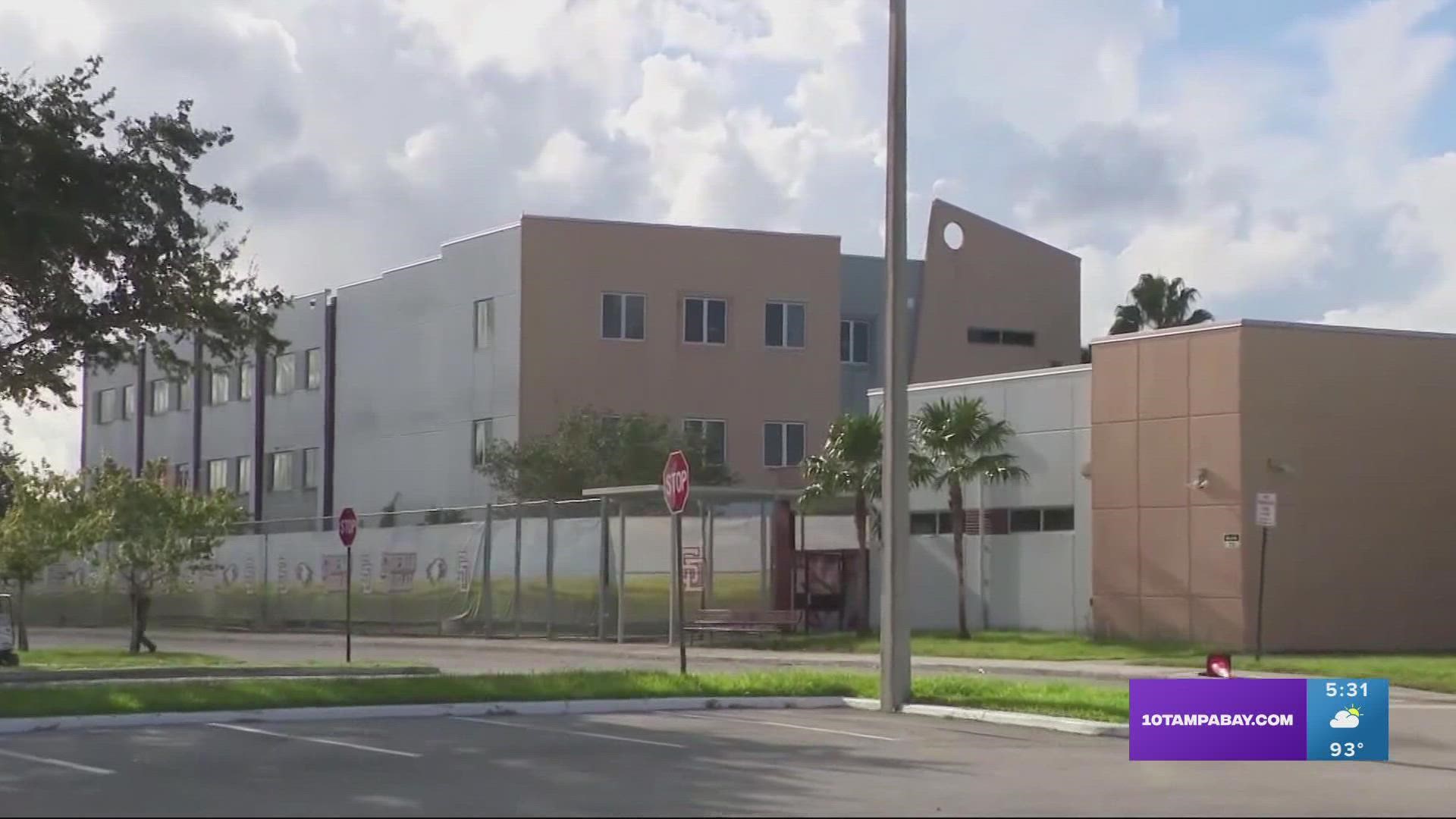FORT LAUDERDALE, Fla — Jurors in the trial of Florida school shooter Nikolas Cruz toured the still blood-spattered rooms of a three-story building at Parkland's Marjory Stoneman Douglas High School on Thursday, an extremely rare visit to an intact crime scene sealed off since he murdered 14 students and three staff members four years ago.
The seven-man, five-woman jury and 10 alternates were bused under heavy security 30 miles from the Broward County Courthouse in downtown Fort Lauderdale to the suburban school, where classes don't resume until later this month. Law enforcement sealed off the area to prevent protesters from interrupting or endangering the jurors' safety.
The panelists and their law enforcement escorts were accompanied into the building by Circuit Judge Elizabeth Scherer, prosecutors and Cruz's attorneys, and walked through the site for about an hour and a half. Cruz waived his right to go with them. Journalists were being escorted into the site after the jury left, for the first public look. They were allowed to carry paper and pen but no cameras.
Prosecutors, who are winding up their case, hope the visit will help prove that the former Stoneman Douglas student's actions were cold, calculated, heinous and cruel; created a great risk of death to many people and “interfered with a government function” — all aggravating factors under Florida's capital punishment law.
Under Florida court rules, neither the judge nor the attorneys were allowed to speak to the jurors — and the jurors weren't allowed to converse with each other — when they retraced the path Cruz followed on Feb. 14, 2018, as he methodically moved from floor to floor, firing down hallways and into classrooms as he went. Prior to the tour, the jurors had already seen surveillance video of the shooting and photographs of its aftermath.
The building has been sealed and surrounded by a chain-link fence since shortly after the massacre. Known both as the freshman and 1200 building, it looms ominously over the school and its teachers, staff and 3,300 students, and can be seen easily by anyone nearby. The Broward County school district plans to demolish it whenever the prosecutors approve. For now, it is a court exhibit.
“When you are driving past, it's there. When you are going to class, it's there. It is just a colossal structure that you can't miss," said Kai Koerber, who was a Stoneman Douglas junior at the time of the shooting. He is now at the University of California, Berkeley, and the developer of a mental health phone app. “It is just a constant reminder ... that is tremendously trying and horrible."
Cruz, 23, pleaded guilty in October to 17 counts of first-degree murder; the trial is only to determine if he is sentenced to death or life without parole.
The building's interior has been left nearly intact since the shooting: Bloodstains still smear the floor, and doors and walls are riddled with bullet holes. Windows in classroom doors are shot out. Rotted Valentine's Day flowers, deflated balloons and other gifts are strewn about. Only the bodies and personal belongings such as backpacks have been removed.
Miami defense attorney David S. Weinstein said prosecutors hope the visit will be “the final piece in erasing any doubt that any juror might have had that the death penalty is the only recommendation that can be made.”
Such site visits are rare. Weinstein, a former prosecutor, said in more than 150 jury trials dating back to the late 1980s, he has only had one.
One reason for their rarity is that they are a logistical nightmare for the judge, who needs to get the jury to the location and back to the courthouse without incident or risk a mistrial. And in a typical case, a visit wouldn't even present truthful evidence: After law enforcement leaves, the building or public space returns to its normal use. The scene gets cleaned up, objects get moved and repairs are made. It's why judges order jurors in many trials not to visit the scene on their own.
Craig Trocino, a University of Miami law professor who has represented defendants appealing their death sentences, said the visit — combined with the myriad graphic videos and photos jurors have already seen — could open an avenue for Cruz's attorneys if they find themselves in the same situation.
"At some point evidence becomes inflammatory and prejudicial," he said. “The site visit may be a cumulative capstone.”
Cruz’s attorneys have argued that prosecutors have used evidence not just to prove their case, but to inflame the jurors’ passions.
Prosecutors are expected to rest their case shortly after the visit.

